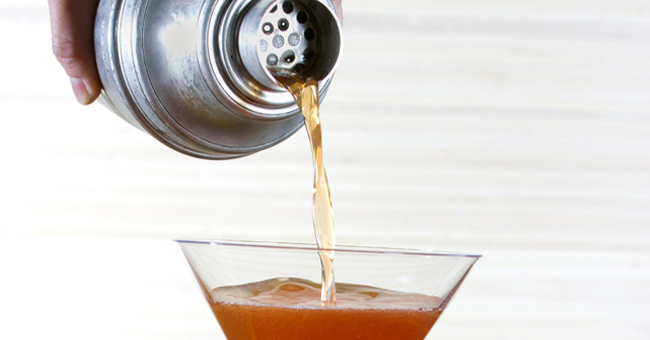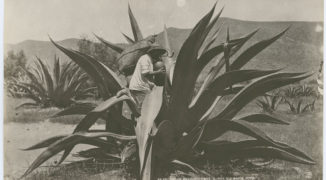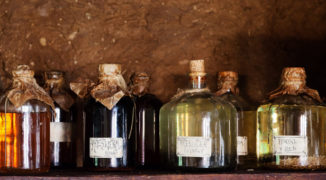When we left off, the cocktail shaker had transformed from ancient gourd to modern bartending tool. In part two, we learn how different styles of shakers emerged.
By the dawn of the 20th century, the cocktail shaker had not only solidified its position as bar necessity, it had evolved into three distinct styles. When the concept of the shaker developed in the United States, what was later called the Boston shaker dominated American bars, while the version that rose to popularity in Britain was called the French shaker — later the Parisian. A third type of shaker, the three-part combination or cobbler shaker, came later, and involved an integrated strainer.
The first modern cocktail shakers, likely introduced in the 1840s, were early forms of the now standard Boston shaker: a tin cup used in combination with a glass to mix drinks. In the U.S., even as other shaker designs came and went, this one stayed popular. “He pressed the shaker on with proper caution and shook the double cone of tin and glass with the energy of a machine,” describes Tom Hall in his 1899 book, “Tales,” poetically. “He held the mixing glass high aloft and let the bubbling contents fall four feet into the waiting tumbler, an amber cataract.” The common name, Boston shaker, doesn’t show up until well into the 20th century.
But in Europe, the glass was forgone within a few decades in favor of a two-part tin construction known as the French or Parisian shaker. The first hard evidence of its coming into common use is an 1878 catalogue from Rogers, Smith & Co. owned by David Wondrich (author of “Imbibe”), which features it. The aesthetics of the simple, urn-shaped tool appealed — and still do — to European bartenders, but never gained favor in America, where the nuisance of the added step of straining negated the elegance.
Throughout the decades, inventors and bartenders filed patent after patent in an effort to improve upon the cocktail shaker, but only Edward Hauck’s 1884 version actually stuck. The “shaker for mixing drinks” patent acknowledges previous, two-part shakers, but cites as its improvement the built-in strainer and a little top. The shaker took its name from the sherry cobbler, which Harry Johnson described just two years earlier in his “Bartenders’ Manual” as, “Without doubt the most popular beverage in the country, with ladies as well as with gentlemen. It is a very refreshing drink for old and young.”
While the three types of shakers developed and claimed their place on the bar long before Prohibition, the evolution of the shaker continued with smaller tweaks and improvements. While early versions were made of tin, sometimes nickel-plated, or — for high society — sterling silver, the final significant change came about with the invention of stainless steel. In the 1920s, it became the preferred material for all three shakers and stays that way through today, when all are still in use in forms not very different from their original invention almost two hundred years ago.





